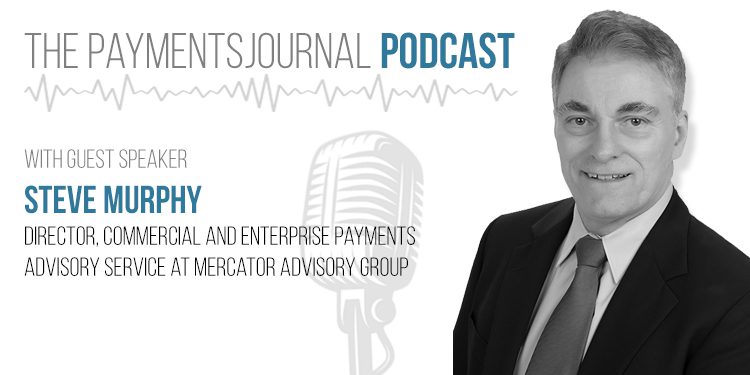Cash management is an integral part of any business. In order to ensure financial stability, a company must effectively keep track of its various cash inflows and outflows. Failing to do so jeopardizes the company’s ability to meet current payment obligations and plan for future payments, two essential aspects of maintaining business stability.
Treasurers and CFOs are typically the individuals at a company tasked with handling cash management. Fortunately for them, there are a variety of tools and products at their disposal to help manage the entire cash flow cycle. This is especially true during the current pandemic. More treasurers are turning to digital solutions to keep cash flows operating in a time of social distancing and work from home requirements.
The sheer amount of cash management tools and services available makes choosing the right option a potentially challenging, if not daunting, decision. To help companies navigate this crucial decision, Mercator Advisory Group is hosting a webinar titled “Matching Solutions with Client Needs in the Cash Cycle: Mind the Gap.”
During the webinar, Steve Murphy, Director of Commercial and Enterprise Payments Advisory Service at Mercator Advisory Group, will discuss the challenges presented in the cash flow cycle and how Mercator can help companies find the right solutions to address them.
PaymentsJournal sat down Murphy to preview the upcoming webinar and learn more about cash flow management.
The many components of the corporate cash cycle
Murphy began the discussion by broadly outlining the various terms and components that comprise the corporate cash cycle. Up first was working capital.
“Folks that have taken finance courses will be familiar with the term working capital, and you hear that utilized a lot these days,” said Murphy. “It’s basically short-term assets minus short-term liabilities.”
Assets can include cash on hand, inventory, and accounts receivables, which are unpaid bills owed to that company; liabilities include accounts payables, or the money that company owes to others. Keeping track of working capital is important because if a company’s liabilities exceed its assets, it can have trouble paying its creditors and potentially go bankrupt.
In essence, the basic components “of the cash cycle [are] the time and the money involved to buy inventory, to store, to sell it, and then to collect on invoices after you ship and it’s received,” explained Murphy. Put another way, the cash cycle—also known as the cash conversion cycle (CCC)—measures the time it takes for a company to convert its investment in resources and inventory into cash flows from sales.
Murphy explained that the formula to calculate the cash conversation cycle contains three parts. To get calculate it, you must add the days of inventory outstanding (DIO) to the days sales outstanding (DSO), and then subtract the days payables outstanding (DPO) from the amount (CCC = DIO + DSO – DPO).
The following definitions can help make this formula understandable:
- DIO: the average number of days that a company holds its inventory before selling. This relates a company’s cash inflows.
- DSO: the average number of days that it takes a company to collect payment after a sale has been made. This also relates to a company’s cash inflows.
- DPO: the ratio that measures the average number of days it takes a company to pay its bills. This relates to a company’s cash outflows.
Being able to calculate CCC is important to any business. “Once a company tracks this cash conversion cycle, they can use it to better understand their own working capital efficiency, as well as compare themselves to competitors in the same segments,” added Murphy.
There are many products to help track cash flow
Since cash flow management is tremendously important but also fairly complicated, there are many cash cycle solutions available to help.
CFOs and treasurers can utilize “a slew of products that are associated with managing expenses and treasury management, including ERPs, treasury management systems, electronic invoices, payments, receivables, trade, finance, reconciliations, and so forth,” said Murphy.
Historically banks have been the ones to provide these solutions. Moreover, the offered services and software “have most often been point solutions,” said Murphy, adding “many vendors that provided solutions across cash cycle operations were normally specializing in one of the solutions and maybe two, but even if they had more, they weren’t actually packaging them as combined solutions.”
But with many fintechs cropping up in recent years, the cash cycle management landscape has changed. Now, there are more vendors to choose from than ever before and the solutions themselves have become more comprehensive and digitally-based. “This has become even more pronounced during the past six months with the onset of the pandemic,” noted Murphy.
Helping mid-tier banks keep up
For large multinational financial institutions, keeping up with the changing cash management landscape is not too difficult. They have the resources necessary to invest in developing their own digital tools and solutions. Or if they would rather not develop their own, many large FIs have the means to simply acquire fintechs that already offer these solutions.
In contrast, “mid-tier banks don’t necessarily have that budget flexibility or resource availability” to develop their own digital cash management tools, said Murphy. This is where Mercator Advisory Group believes it can help.
“We can help them think through that process and help build a more intelligent set of criteria to compete more effectively and fill the gap going forward,” explained Murphy. Those interested in learning more about cash cycle management and how Mercator Advisory Group can help can register for the webinar in the form below.
